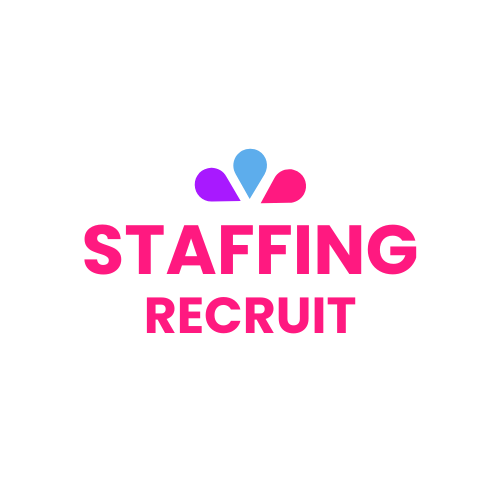Introduction
The healthcare industry is at a critical point where technology and human resource management come together. AI-powered candidate screening has become a game-changing solution for healthcare organisations dealing with increasing staffing issues. This groundbreaking technology brings accuracy and speed to the hiring process, completely transforming how medical facilities find and hire top talent.
Effective staffing is still the key to delivering quality healthcare. Medical facilities need skilled professionals who can provide excellent patient care while following industry regulations. The consequences are especially serious – one wrong hire can affect patient outcomes and the overall performance of the organisation.
AI-powered screening systems offer remarkable benefits to healthcare recruitment:
- Rapid Talent Identification: Advanced algorithms process thousands of applications in minutes
- Precision Matching: Smart technology aligns candidate qualifications with specific role requirements
- Risk Reduction: Automated screening reduces human bias and ensures compliance
- Resource Optimisation: Streamlined processes free up HR teams for strategic tasks
These innovations represent a significant leap forward in healthcare recruitment, promising better-qualified candidates and more efficient hiring processes.
1. Efficiency in Recruitment Processes
AI-powered recruitment automation is changing the game for healthcare hiring. It’s taking those slow, manual tasks and turning them into smooth, efficient operations. With AI technologies in play, candidate screening becomes a systematic process that runs around the clock, getting rid of bottlenecks and significantly shortening hiring cycles.
Traditional vs AI-Driven Recruitment Timelines
In the past, healthcare recruitment usually took about 49 days from when a job was posted to when an offer was accepted. But with AI-driven systems, this timeline can be cut down to as little as 5 days!
Here’s how:
1. Automated Resume Parsing
- Instant extraction of relevant qualifications
- Accurate skills matching against job requirements
- Real-time candidate ranking based on compatibility
2. Smart Candidate Sourcing
- Multi-channel job distribution
- Passive candidate identification
- Automated talent pool creation
The quality of shortlisted candidates improves significantly as AI systems learn from successful hires and refine their selection criteria. These intelligent platforms analyse patterns in successful employee profiles to identify high-potential candidates who match specific healthcare roles.
How AI Handles High-Volume Applications
AI recruitment tools excel at handling high-volume applications common in healthcare settings:
- Process thousands of applications simultaneously
- Screen candidates against multiple criteria in seconds
- Flag qualified healthcare professionals for immediate review
- Schedule interviews automatically with qualified candidates
Healthcare organisations using AI-powered screening report an 85% reduction in administrative tasks related to recruitment. This efficiency allows HR professionals to focus on strategic activities such as candidate relationship building and complex decision-making processes that require human judgment.
The Benefits of Standardisation in Screening
The precision of AI screening minimises the risk of overlooking qualified candidates while maintaining consistent evaluation standards across all applications. This standardisation ensures fair assessment practices and helps healthcare facilities maintain compliance with recruitment regulations.
2. Enhanced Candidate Matching and Evaluation
AI-powered resume analysis algorithms are changing the way healthcare recruitment evaluates candidates. These advanced systems carefully analyse candidates’ qualifications, experience, and skills to create precise matches between job requirements and applicant profiles.
Advanced Matching Capabilities:
These AI algorithms have several capabilities that set them apart from traditional methods:
- Semantic analysis to understand context beyond keywords
- Pattern recognition in career progression
- Skills assessment based on previous roles
- Certification and license verification
- Language proficiency evaluation
The AI algorithms excel at identifying subtle indicators of candidate potential that human recruiters might miss. For instance, a nurse’s experience with specific medical equipment or specialised procedures can be automatically flagged and matched with relevant department needs.
AI vs. Traditional Evaluation Methods
Here’s a comparison of how AI-driven evaluation methods stack up against traditional methods:
| Traditional Methods AI-Driven Evaluation Manual resume screening (2-3 hours per position) | Instant analysis of hundreds of applications |
| Subjective qualification assessment | Standardised evaluation criteria |
| Limited candidate pool analysis | Comprehensive database searching |
| Risk of unconscious bias | Objective screening parameters |
| Basic keyword matching | Contextual understanding of experience |
Healthcare organisations using AI-driven evaluation systems report:
- 75% reduction in screening time
- 50% improvement in candidate-role matching accuracy
- 35% decrease in early turnover rates
These systems also excel at identifying transferable skills from other healthcare sectors, expanding the potential talent pool while maintaining quality standards. The technology can assess candidates’ soft skills through natural language processing of their application materials, providing insights into communication abilities and cultural fit.
AI algorithms continuously learn from successful placements, refining their matching capabilities to identify candidates who are likely to thrive in specific healthcare environments. This adaptive learning ensures increasingly accurate predictions of candidate success rates.
3. Improved Communication and Candidate Experience
The healthcare recruitment landscape demands swift, clear communication between candidates and recruiters. AI-powered screening systems are changing the way this interaction happens in a big way:
- 24/7 Automated Responses: Instant acknowledgment of applications, status updates, and scheduling confirmations
- Personalised Communication: AI chatbots deliver tailored responses based on candidate profiles and application stages
- Multi-Channel Engagement: Seamless interaction across email, SMS, and messaging platforms
AI recruitment tools maintain consistent communication through:
- Real-time application tracking updates
- Automated interview scheduling
- Customised feedback delivery
- Progress notifications at each recruitment stage
The impact of AI-driven communication goes beyond just being efficient:
“83% of candidates say a positive recruitment experience can change their mind about a role or company they once doubted”
Healthcare organisations implementing AI communication systems report:
- 90% reduction in candidate query response time
- 75% increase in candidate satisfaction scores
- 60% improvement in application completion rates
These systems can easily scale up to handle large-scale recruitment while still providing personalised interactions. AI-powered chatbots have the capability to manage thousands of conversations at the same time, addressing common inquiries about job requirements, workplace culture, and benefits packages. This consistent engagement keeps qualified healthcare professionals interested in the recruitment process while also reducing the administrative workload on HR teams.
4. Cost Reduction and Resource Optimisation
Healthcare organisations that use AI-powered candidate screening systems have reported an average 18% decrease in HR-related costs. This significant savings comes from automating tasks that usually take up a lot of time for HR staff.
AI recruitment platforms make resource allocation more efficient by:
- Lessening Administrative Workload: Automated resume screening eliminates manual document review, saving hundreds of staff hours
- Shortening Time-to-Hire: Faster candidate processing reduces costly periods of having job vacancies
- Cutting Advertising Expenses: AI-driven targeted job postings reach qualified candidates more efficiently
- Reducing Bad Hire Risk: Advanced matching algorithms lower turnover-related costs
The financial benefits go beyond just direct cost savings:
- HR staff can focus on strategic initiatives instead of administrative tasks
- Overtime expenses decrease as vacancies are filled more quickly
- Training costs go down because of better candidate matching
- Recruitment agency fees are reduced
Healthcare organisations can use these savings for:
- Investing in advanced healthcare technology
- Supporting staff development programs
- Enhancing patient care services
- Offering competitive compensation packages
Typically, the costs associated with implementing AI show a positive return on investment (ROI) within 12 to 18 months. Organisations have reported reductions in cost-per-hire of up to 30%. These systems also scale efficiently, meaning they can handle increased recruitment volumes without proportional cost increases – which is especially important for growing healthcare facilities.
5. Data-Driven Insights for Strategic Decision-Making
AI-powered candidate screening systems generate vast amounts of valuable recruitment data, enabling healthcare organisations to make informed hiring decisions through predictive analytics. These sophisticated systems analyse patterns in:
- Candidate success rates
- Time-to-fill positions
- Seasonal hiring fluctuations
- Department-specific recruitment needs
- Skills gap analysis
Healthcare organisations leverage historical data to identify successful hiring patterns and replicate them across different departments. For example, AI systems can analyse the characteristics of high-performing nurses or medical technicians to create targeted recruitment profiles for future hires.
Real-world Applications of Predictive Analytics:
- Identifying peak hiring seasons for specialised medical roles
- Predicting turnover rates in specific departments
- Mapping skill requirements for emerging healthcare positions
- Analysing candidate sourcing channels’ effectiveness
- Tracking retention rates based on hiring criteria
The AI algorithms process this data to generate actionable recommendations, such as:
“Based on historical patterns, pediatric nursing positions take 23% longer to fill during summer months. Start recruitment processes earlier to maintain optimal staffing levels.”
These data-driven insights enable healthcare organisations to:
- Adjust recruitment timelines proactively
- Allocate resources efficiently
- Develop targeted recruitment campaigns
- Create competitive compensation packages
- Build strategic workforce planning models
By incorporating predictive analytics into recruitment strategies, healthcare organisations can anticipate staffing needs before they become critical issues. This proactive approach transforms traditional reactive hiring methods into strategic talent acquisition processes aligned with long-term organisational objectives.
6. Addressing Staffing Shortages with AI Solutions
Healthcare facilities face critical staffing challenges that directly impact patient care quality. The healthcare sector experiences:
- High turnover rates – averaging 19.5% across healthcare positions
- Extended vacancy periods – positions remaining unfilled for 85-118 days
- Increased patient-to-staff ratios – affecting care delivery and staff burnout
AI-driven solutions provide rapid response mechanisms to these pressing staffing needs through:
Real-time Vacancy Management
- Instant job posting distribution across multiple platforms
- Automated candidate sourcing from diverse talent pools
- Quick identification of qualified professionals available for immediate placement
- Analysis of patient admission patterns
- Forecasting of seasonal staffing requirements
- Early warning systems for potential staff shortages
Emergency Response Capabilities
- Rapid deployment of temporary healthcare workers
- Cross-referencing of credentials and qualifications
- Immediate verification of licensing and certifications
AI systems excel at matching available healthcare professionals with urgent staffing needs, reducing the time facilities spend understaffed. These solutions maintain continuous monitoring of staffing levels and automatically trigger recruitment processes when predetermined thresholds are reached, ensuring healthcare organisations maintain optimal staff-to-patient ratios.
Conclusion
AI-powered candidate screening solutions are changing the way healthcare recruitment works. These advanced systems have proven to be highly effective in making hiring processes smoother, cutting down costs, and solving important staffing problems in the healthcare industry.
Healthcare organisations can benefit greatly by embracing AI technology:
- Improved recruitment efficiency through automated screening and evaluation
- Data-driven decision making backed by powerful analytics
- Better candidate experience with faster, more responsive communication
- Lower hiring costs and better use of resources
However, when implementing AI solutions, healthcare organisations need to take a balanced approach that takes into account:
- Ethical implications of automated decision-making
- Privacy and security of candidate data
- Regular system audits to prevent bias
- Human oversight in final hiring decisions
The future of healthcare recruitment lies in the strategic integration of AI technologies. Organisations that adapt these innovative solutions position themselves to build stronger, more resilient healthcare teams ready to meet tomorrow’s challenges.

